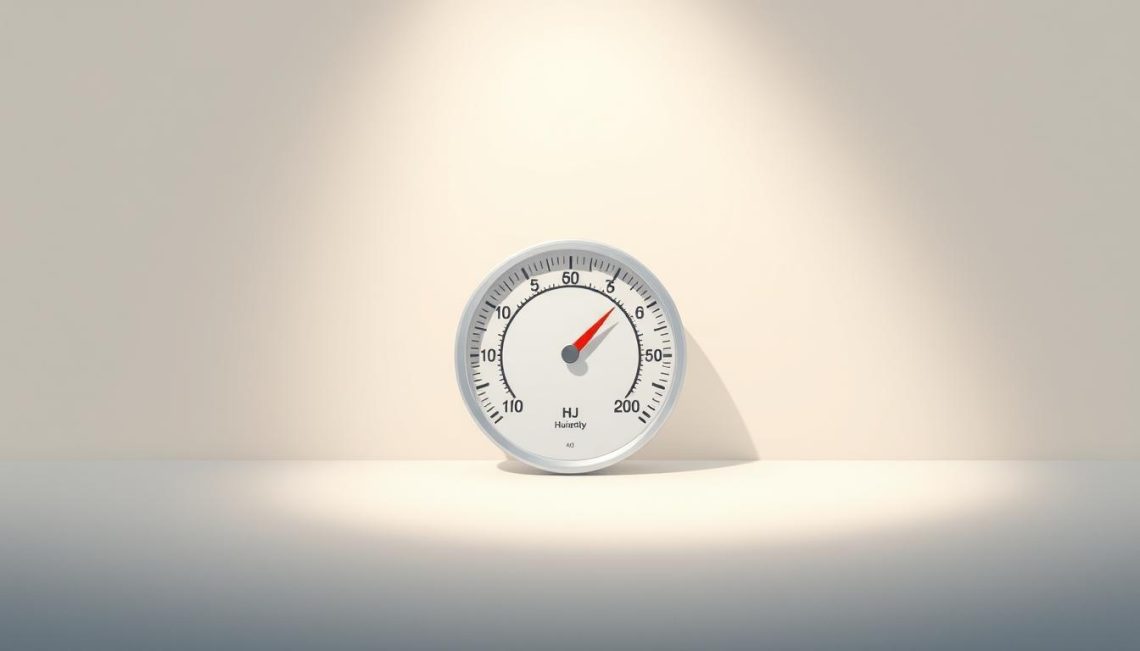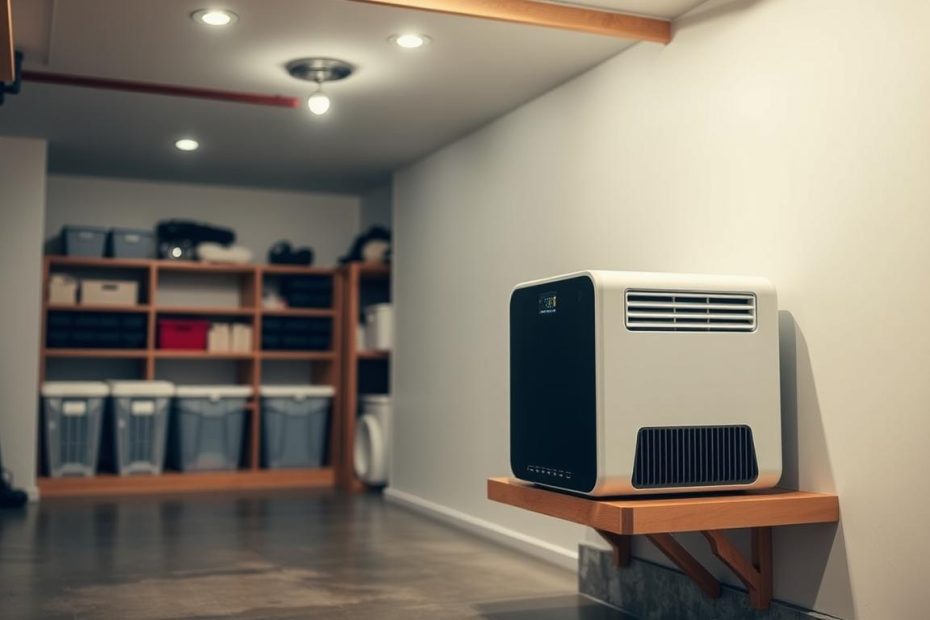Maintaining a healthy basement environment is crucial for the overall well-being of our homes. One key aspect of this is controlling the humidity. Excessive moisture can lead to issues such as mold growth and structural damage, while a dry environment can prevent these problems.
We will explore the importance of achieving the perfect balance in basement humidity. This involves understanding the optimal humidity percentages for different seasons and how to measure and control humidity effectively. By doing so, homeowners can ensure a safe and healthy environment.
Our goal is to provide guidance on basement humidity control, helping you achieve an ideal humidity level that prevents common issues associated with moisture imbalance.
Understanding Basement Humidity and Its Importance
Understanding the dynamics of basement humidity is essential for maintaining a healthy and structurally sound home. Basement humidity refers to the amount of moisture in the air within the basement area of a home. This aspect of home maintenance is critical because it directly impacts both the health of the occupants and the structural integrity of the home.
The Science Behind Basement Moisture
Moisture in basements can arise from various sources, including groundwater seepage, condensation, and plumbing leaks. The science behind basement moisture involves understanding how water vapor enters and accumulates within the basement environment.
When the ground around a home is saturated with water, the moisture can seep into the basement through the walls and floors. Similarly, warm, moist air can condense on cooler surfaces within the basement, leading to increased humidity levels.
Health and Structural Impacts of Improper Humidity
Health Concerns
Improper humidity levels can lead to significant health concerns. High humidity fosters the growth of mold and mildew, which can exacerbate respiratory issues such as asthma and trigger allergic reactions.
Structural Damage Risks
Excessive humidity can also lead to structural damage. Moisture can cause wooden beams to rot, metal fixtures to corrode, and walls to crack. Over time, this can compromise the structural integrity of a home, leading to costly repairs.
The following table summarizes the key health and structural impacts of improper basement humidity:
| Impact Category | Specific Issues | Potential Consequences |
|---|---|---|
| Health Concerns | Mold and mildew growth, dust mites | Respiratory problems, allergic reactions |
| Structural Damage | Wood rot, metal corrosion, wall cracks | Compromised structural integrity, costly repairs |
The Ideal Basement Humidity Level Range
Understanding the ideal humidity range for your basement is vital for preventing various issues. The ideal humidity level is not a one-size-fits-all solution; it varies with the seasons.
Optimal Humidity Percentages for Different Seasons
Generally, a humidity level range of 30-50% is considered optimal for most climates. During winter, a lower humidity level (around 30-40%) is often recommended to prevent condensation and mold growth. In contrast, summer months may require slightly higher humidity levels (up to 50%) to maintain comfort.
| Season | Optimal Humidity Range | Reasons |
|---|---|---|
| Winter | 30-40% | Prevent condensation and mold growth |
| Summer | Up to 50% | Maintain comfort |
Warning Signs of Humidity Problems
Recognizing the warning signs of humidity problems is crucial. These signs can indicate either excessive or insufficient humidity.
Signs of Excessive Humidity
Excessive humidity can lead to several issues, including condensation on windows, mold growth, and musty odors. These signs indicate that the humidity level is too high.
Signs of Insufficient Humidity
On the other hand, insufficient humidity can cause dry skin, static electricity, and cracked wooden furniture. These are indicators that the humidity level is too low.

By understanding these signs and adjusting your humidity levels accordingly, you can maintain an optimal environment in your basement.
How to Measure and Monitor Basement Humidity
Measuring and monitoring basement humidity is a critical step in preventing moisture-related issues. High humidity can lead to mold growth, structural damage, and health problems. Therefore, it’s essential to have the right tools and practices in place.
Recommended Humidity Measuring Tools
To accurately measure basement humidity, you need the right tools. Hygrometers are the most common devices used for this purpose. They come in various types, including digital and analog models. Some modern hygrometers are part of smart home systems, allowing for remote monitoring and alerts when humidity levels go beyond the ideal range.
“Using a hygrometer is the first step in managing your basement’s humidity. It’s a simple, effective way to ensure your home remains healthy and dry.”
Setting Up a Regular Monitoring Schedule
Once you have a hygrometer, setting up a regular monitoring schedule is crucial. This involves checking the humidity levels at the same time daily or weekly, depending on your needs. It’s also beneficial to monitor temperature fluctuations, as they can affect humidity levels.
- Check humidity levels at the same time every day or week.
- Use a smart hygrometer for real-time updates and alerts.
- Keep a log of your readings to track changes over time.
By following these steps, you can ensure that your basement remains within the ideal humidity range, protecting your home and health.
Effective Methods to Control Your Basement’s Humidity
To achieve effective basement humidity control, we must adopt a comprehensive approach. Proper ventilation is key, allowing moist air to escape and drier air to enter, thus controlling basement humidity. Using dehumidifiers or humidifiers as needed is also vital. Dehumidifiers reduce humidity levels, especially in damp areas, while humidifiers maintain a comfortable level during dry periods.
Ensuring your basement is well-insulated and sealed against moisture is equally crucial in controlling basement humidity. By implementing these measures, you can maintain an ideal basement humidity level, protecting your home and health.
